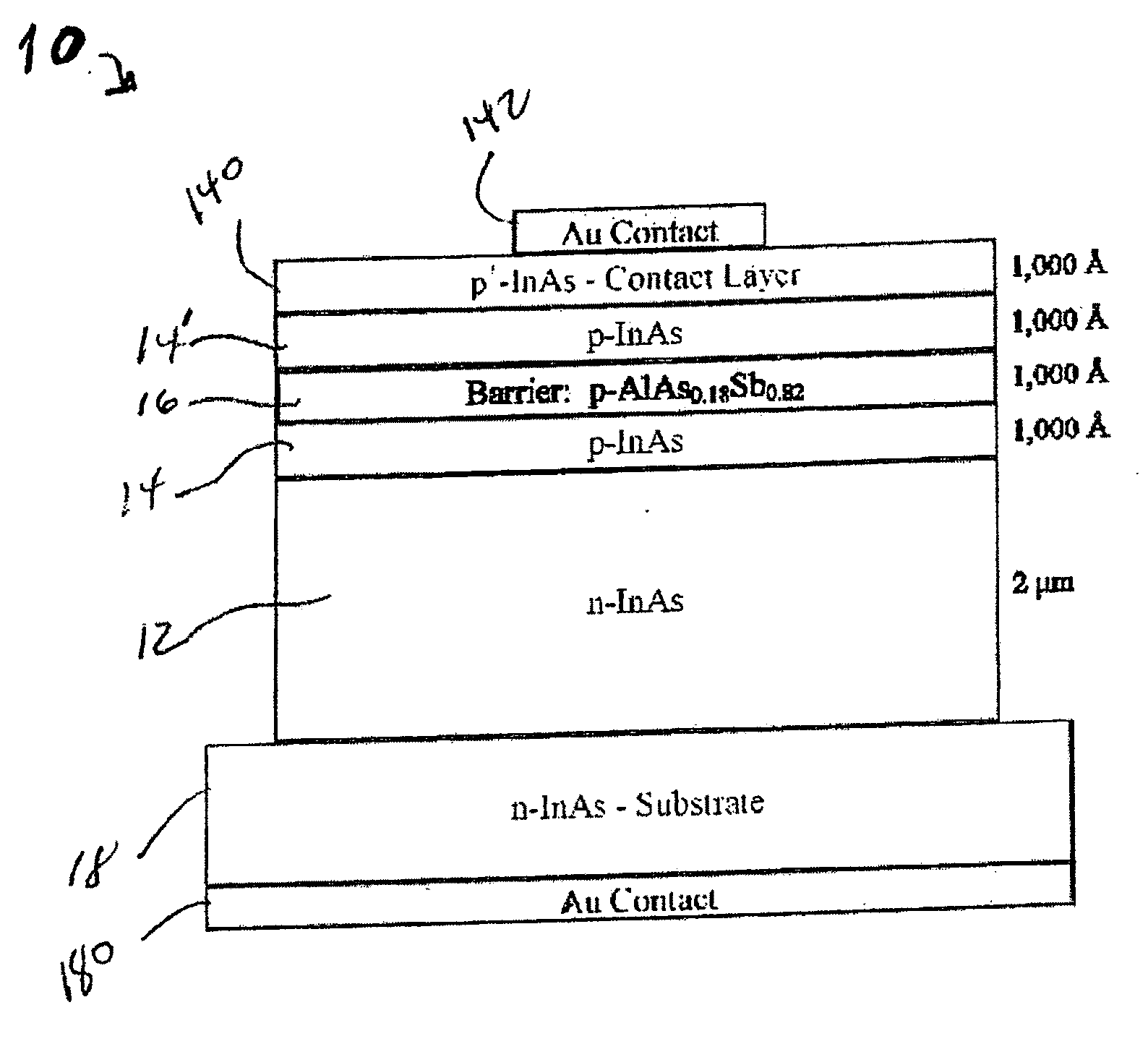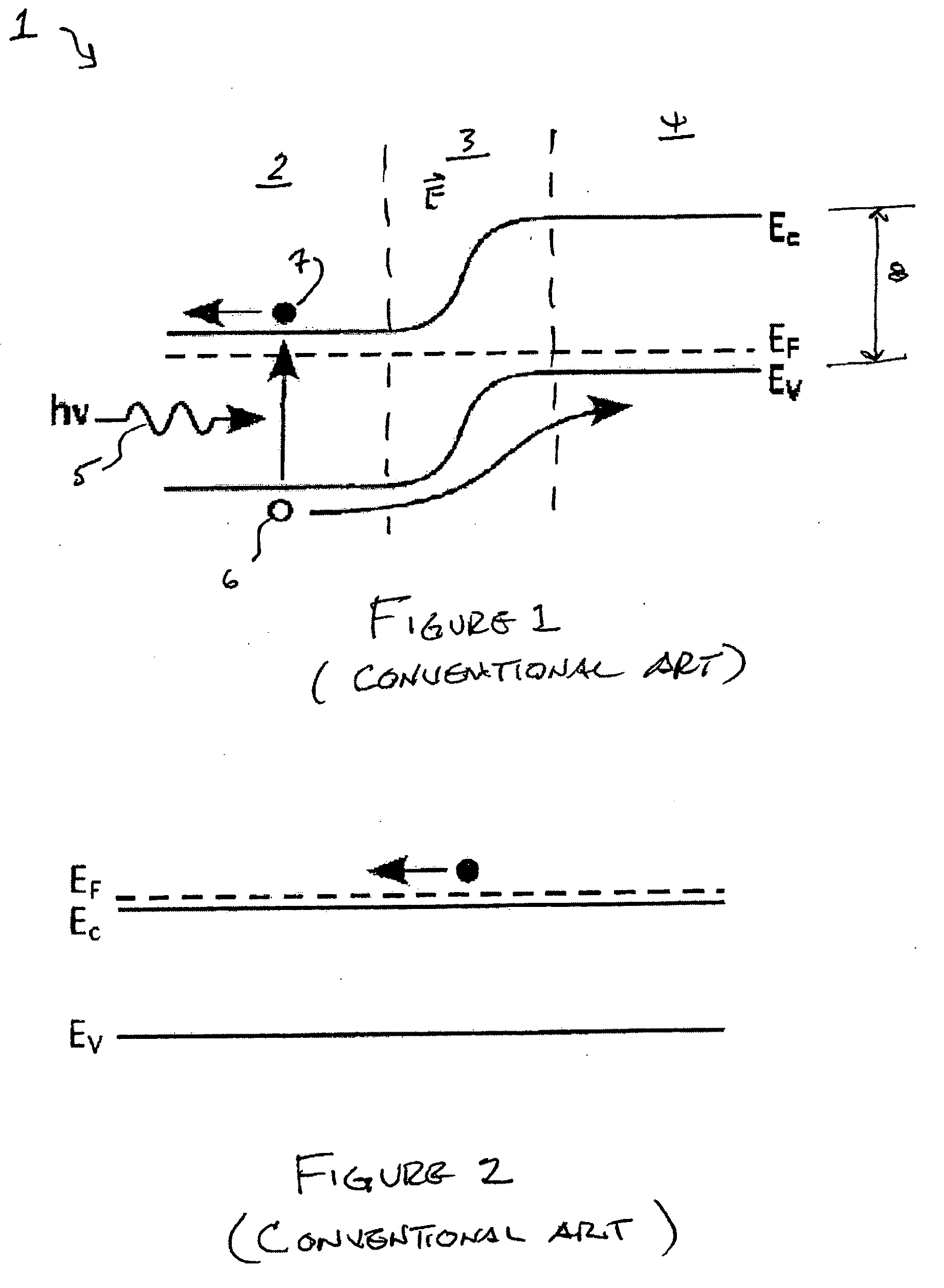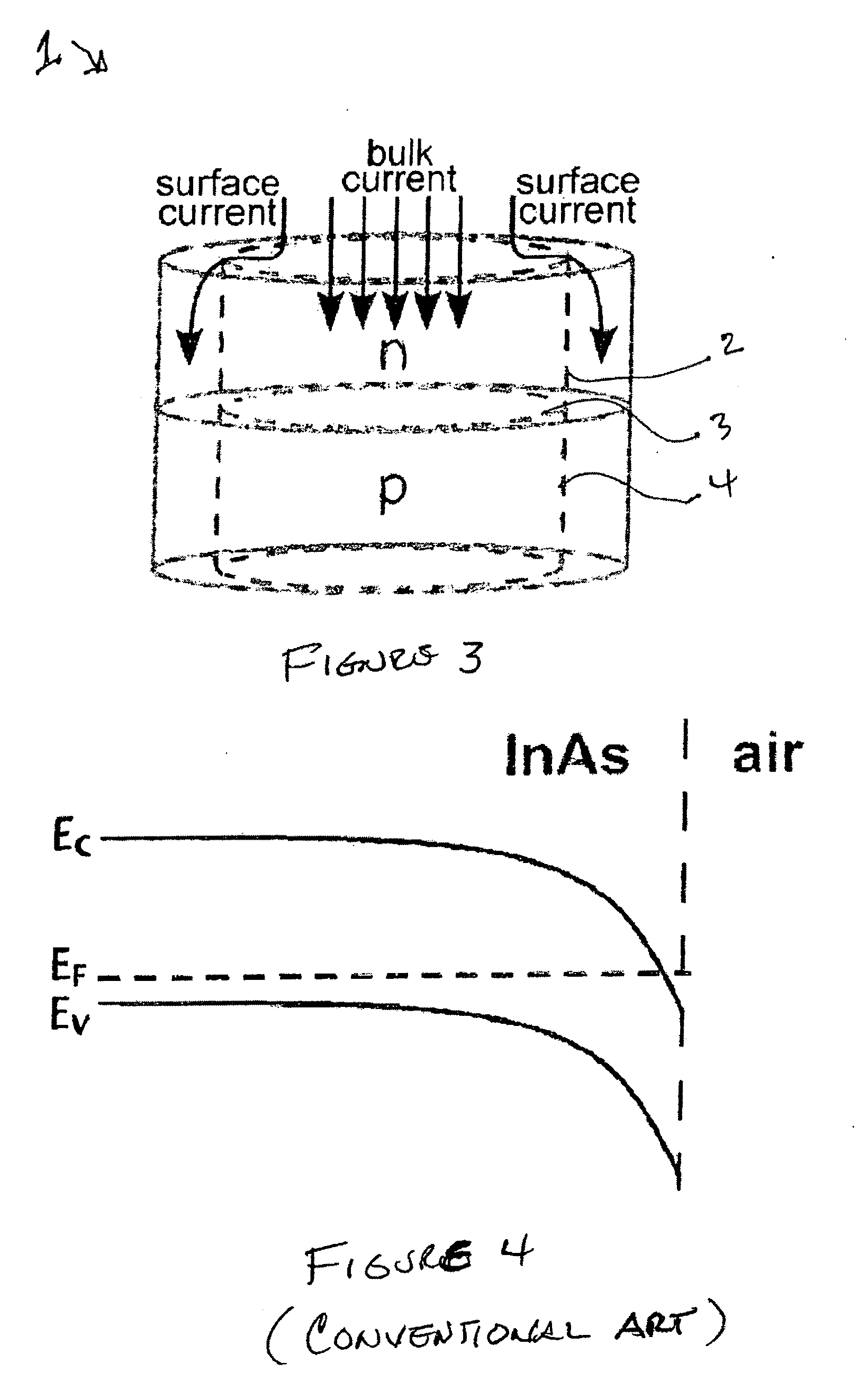Semiconductor device and method
a technology of semiconductor devices and semiconductors, applied in the field of semiconductor devices, can solve the problems of compromising the performance of the semiconductor device, affecting the efficiency of the device, and being somewhat negligible, so as to reduce the surface current, and eliminate the effect of surface leakage curren
- Summary
- Abstract
- Description
- Claims
- Application Information
AI Technical Summary
Benefits of technology
Problems solved by technology
Method used
Image
Examples
example 1
[0054]As embodied herein and depicted in FIG. 9, a cross-sectional diagrammatic view of an InAs photodiode 10 with a unipolar barrier 16 in accordance with one embodiment of the invention is disclosed. In this embodiment, AlAs0.18Sb0.82 has been identified as a suitable unipolar barrier material for InAs semiconductor devices. The photodiodes 10 of the present invention were grown by solid source molecular beam epitaxy (MBE) by a Riber 32P system utilizing As2 and Sb4. First, the devices were grown on unintentionally doped, n-type InAs substrates 18, which were disposed on a gold contact material 180. Next, a 2 μm, unintentionally doped n-type InAs layer 12 having a carrier concentration of n≈1016 cm−3 was deposited on substrate 18. This step was followed by depositing a p-type layer 14. P-type layer 14 is formed by a 1,000 Å (angstrom) layer of beryllium doped p-type InAs with a carrier concentration of p≈1018 cm−3. At this point in the process, a growth stop of about 2 minutes fol...
PUM
 Login to View More
Login to View More Abstract
Description
Claims
Application Information
 Login to View More
Login to View More - R&D
- Intellectual Property
- Life Sciences
- Materials
- Tech Scout
- Unparalleled Data Quality
- Higher Quality Content
- 60% Fewer Hallucinations
Browse by: Latest US Patents, China's latest patents, Technical Efficacy Thesaurus, Application Domain, Technology Topic, Popular Technical Reports.
© 2025 PatSnap. All rights reserved.Legal|Privacy policy|Modern Slavery Act Transparency Statement|Sitemap|About US| Contact US: help@patsnap.com



